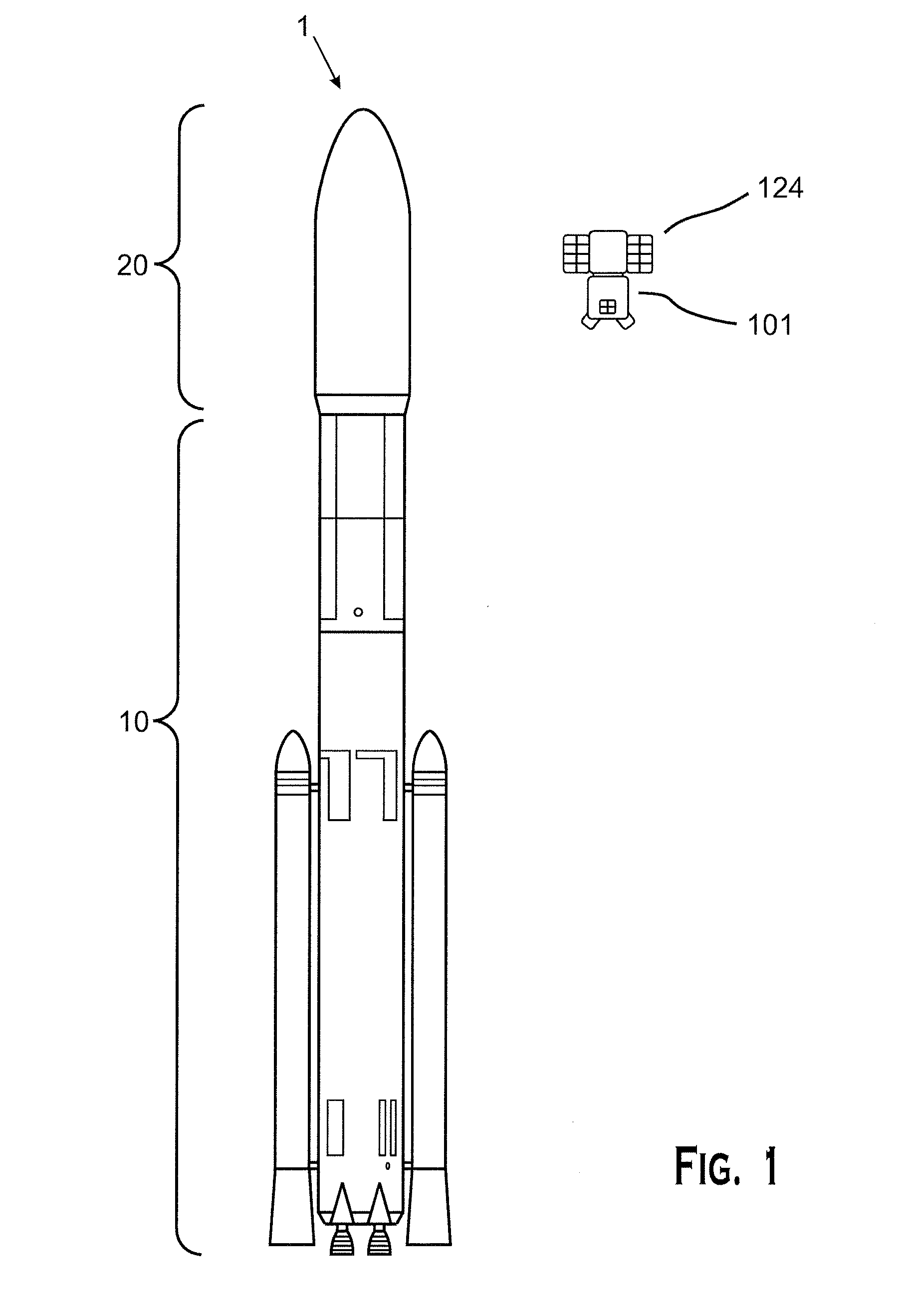Mission agnostic space vehicle
a space vehicle and mission technology, applied in the field of mission agnostic space vehicles, can solve the problems of prohibitively high cost of developing, designing and building a space vehicle for any purpose, requiring significant lead time, and the same design cannot typically be re-used in association with dissimilar mission profiles. , to achieve the effect of easy customization of emissivity, and reducing cost per uni
- Summary
- Abstract
- Description
- Claims
- Application Information
AI Technical Summary
Benefits of technology
Problems solved by technology
Method used
Image
Examples
Embodiment Construction
[0044]Aspects of the invention address one or more problems associated with the manufacture of space vehicles. The embodiments of the invention disclosed herein are typically associated with space vehicles bound for earth orbit, often in the form of what are referred to as “Satellites.” A certain embodiment of the invention comprises a mission-agnostic space vehicle platform intended to reduce costs associated with the use of such space vehicles. With reference to FIG. 1, a rocket 1 can be comprised of two segments: a launch segment 10 and a space segment 20. After the launch of the rocket 1, the launch segment 10 can be discarded while the space segment 20 continues on to its designated mission. The space segment 20 further comprises a spacecraft bus 101 and a payload 124. The spacecraft bus 101 includes many of the electronic components that will be required during a mission, and will often include components that are commonly required across a variety of missions. The payload 124...
PUM
 Login to View More
Login to View More Abstract
Description
Claims
Application Information
 Login to View More
Login to View More - R&D
- Intellectual Property
- Life Sciences
- Materials
- Tech Scout
- Unparalleled Data Quality
- Higher Quality Content
- 60% Fewer Hallucinations
Browse by: Latest US Patents, China's latest patents, Technical Efficacy Thesaurus, Application Domain, Technology Topic, Popular Technical Reports.
© 2025 PatSnap. All rights reserved.Legal|Privacy policy|Modern Slavery Act Transparency Statement|Sitemap|About US| Contact US: help@patsnap.com



